 Cattle and their young herders
The last page showed
Cattle and their young herders
The last page showed
 a little of the City of Đà Lạt, here the surrounding countryside is introduced. While the city is at a considerable elevation, affording a delightful climate, much of the province is fully tropical. This page illustrates the paddy fields, grazing and housing associated with the greater heat. A striking aspect of this part of Vietnam is the conversion of the jungle to land used for cash crops; a later page devotes itself to to that theme. Here the emphasis is on how the country appears now, and the images that greet the visitor.
a little of the City of Đà Lạt, here the surrounding countryside is introduced. While the city is at a considerable elevation, affording a delightful climate, much of the province is fully tropical. This page illustrates the paddy fields, grazing and housing associated with the greater heat. A striking aspect of this part of Vietnam is the conversion of the jungle to land used for cash crops; a later page devotes itself to to that theme. Here the emphasis is on how the country appears now, and the images that greet the visitor.
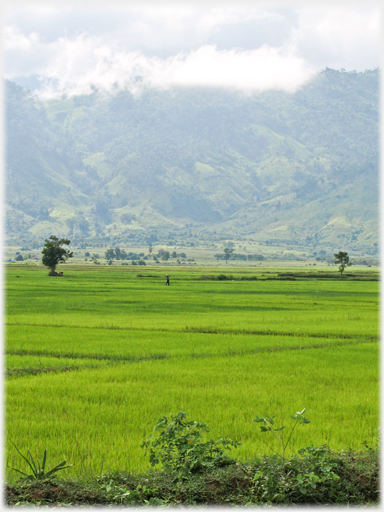 Paddy running to the mountain foot
Paddy running to the mountain foot
 A village sitting beyond the paddy
A village sitting beyond the paddy
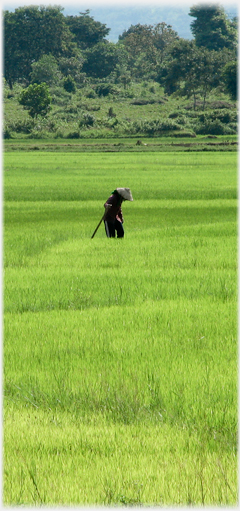 A woman works in her field...
A woman works in her field...
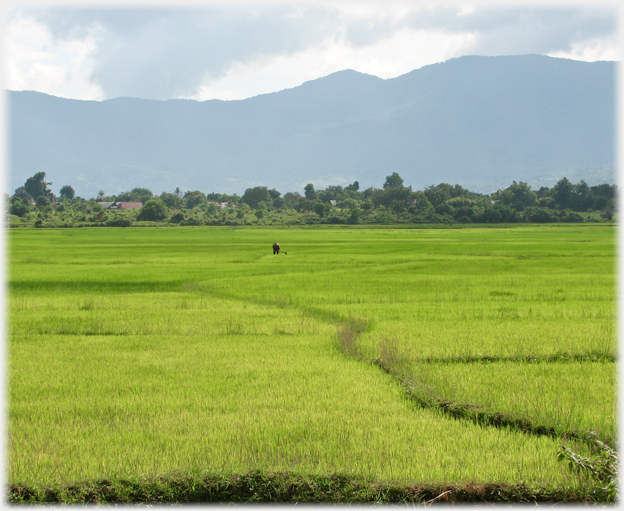 ...the wandering path to where she works
...the wandering path to where she works
 The unhurried progress of other 'cowboys'
The unhurried progress of other 'cowboys'
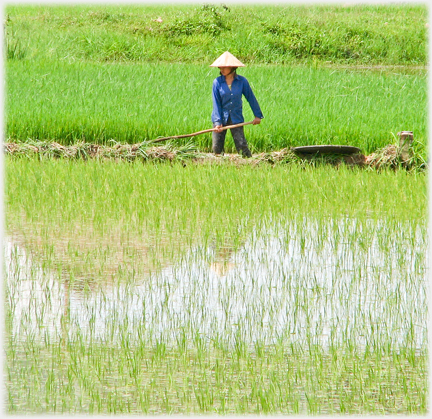 Often women tend their fields alone...
Often women tend their fields alone...
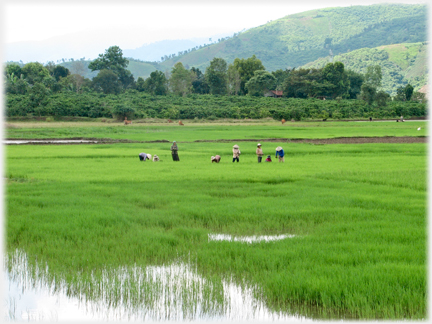 ...on other occasions a party is formed
...on other occasions a party is formed
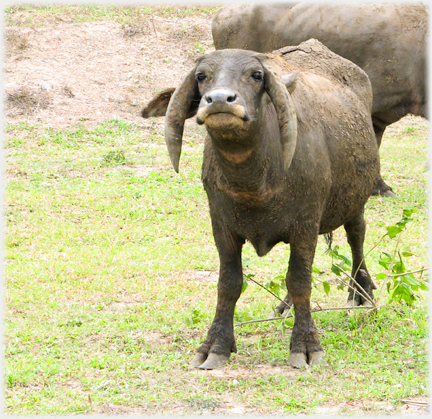 This nose up stance is so common with buffalo - their sense of smell is vital to them
This nose up stance is so common with buffalo - their sense of smell is vital to them
 Various shaped horns seem at odds with these most mild of animals -
to a page with
Various shaped horns seem at odds with these most mild of animals -
to a page with
 more buffalo portraits
more buffalo portraits
 More young people in charge of an unusually large group of buffalo
More young people in charge of an unusually large group of buffalo
 But not only young people get to...
But not only young people get to...
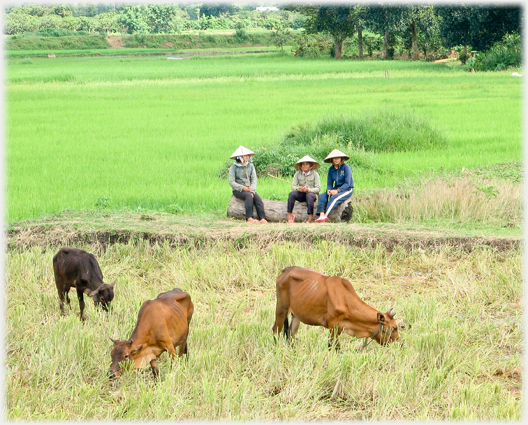 ...spend days watching animals eat; idleness can be socially valuable
...spend days watching animals eat; idleness can be socially valuable
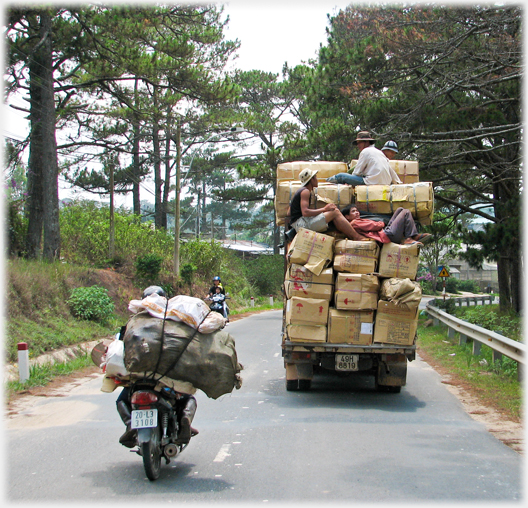 Safety on the roads. The sacks falling off the motorbike would be nothing to the damage done if the sleeping guy was bounced off his parcels
Safety on the roads. The sacks falling off the motorbike would be nothing to the damage done if the sleeping guy was bounced off his parcels
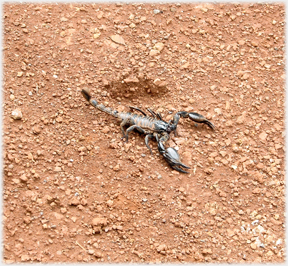 Scorpion - eaten in this area
Scorpion - eaten in this area
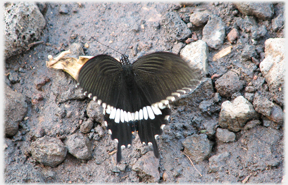 Butterflies here are often bat sized, but usually too fast moving to photograph
Butterflies here are often bat sized, but usually too fast moving to photograph
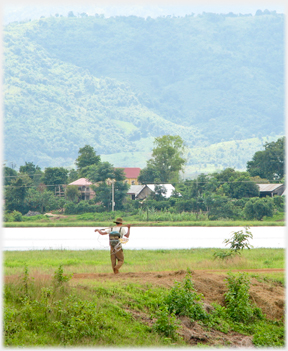 A fisherman on his way to the water. But its not a rod he carries, rather an electric probe and battery
A fisherman on his way to the water. But its not a rod he carries, rather an electric probe and battery
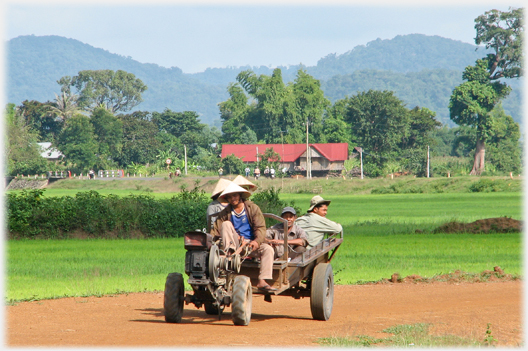 These one cylinder all purpose motors are seen everywhere. Here it is attached to a trailer providing human transport, but they are equally adaptable to being a plough or the motor power for machinery
These one cylinder all purpose motors are seen everywhere. Here it is attached to a trailer providing human transport, but they are equally adaptable to being a plough or the motor power for machinery
 The countryside around Đà Lạt City is far from rural. The demand for fruit, vegetables and flowers is huge, consequently every inch of ground is brought into productive use. Here something of the vast acreages of glass-houses and poly-tunnels can be seen
The countryside around Đà Lạt City is far from rural. The demand for fruit, vegetables and flowers is huge, consequently every inch of ground is brought into productive use. Here something of the vast acreages of glass-houses and poly-tunnels can be seen
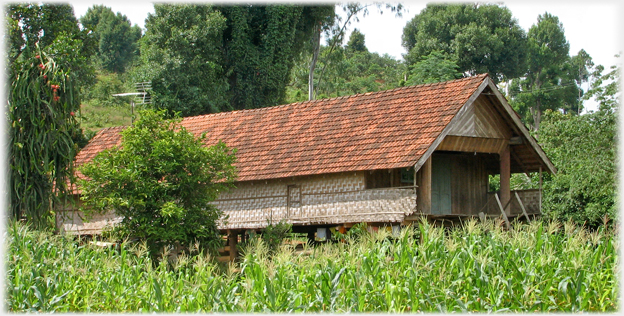
 Simpler thatched houses
Simpler thatched houses
 Above and to the right are modern versions of traditional Long Houses with tiled roofs and an electricity supply. And below is an older type specially constructed for the
Ethnographic Museum
Above and to the right are modern versions of traditional Long Houses with tiled roofs and an electricity supply. And below is an older type specially constructed for the
Ethnographic Museum
 in Hà Nội. Some are of very considerable length, the one below being over 80 metres long. Extended families live together sharing that single 'ladder' - awkward to negotiate for stiff westerners - and living their whole lives in one shared space - for often there are no internal divisions in the house.
in Hà Nội. Some are of very considerable length, the one below being over 80 metres long. Extended families live together sharing that single 'ladder' - awkward to negotiate for stiff westerners - and living their whole lives in one shared space - for often there are no internal divisions in the house.
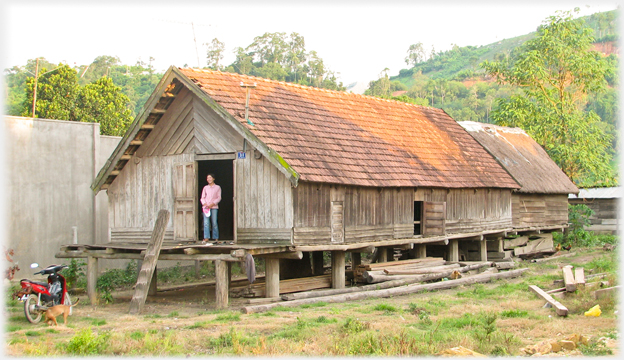

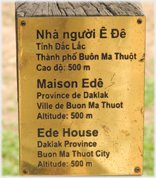 This sign, by the pictured long house on the left (in the Ethnographic Museum) says that the house belongs to the Ê Đê people, 200,000 of whom still live in the area to the north of Đà Lạt. It has the woven bamboo walls characteristic of this date of building, but that awkward ladder has not changed!
This sign, by the pictured long house on the left (in the Ethnographic Museum) says that the house belongs to the Ê Đê people, 200,000 of whom still live in the area to the north of Đà Lạt. It has the woven bamboo walls characteristic of this date of building, but that awkward ladder has not changed!
 This row of small houses in a village sport T.V. aerials and satellite dishes
This row of small houses in a village sport T.V. aerials and satellite dishes
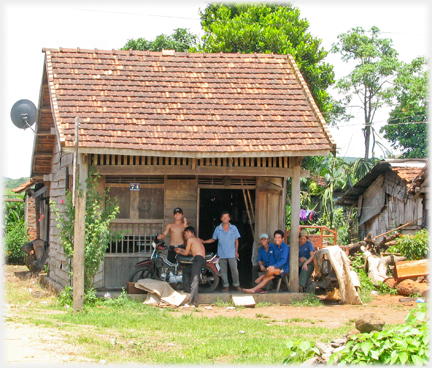 Men on their house veranda greeting us
Men on their house veranda greeting us
 Another design of house front with its family
Another design of house front with its family
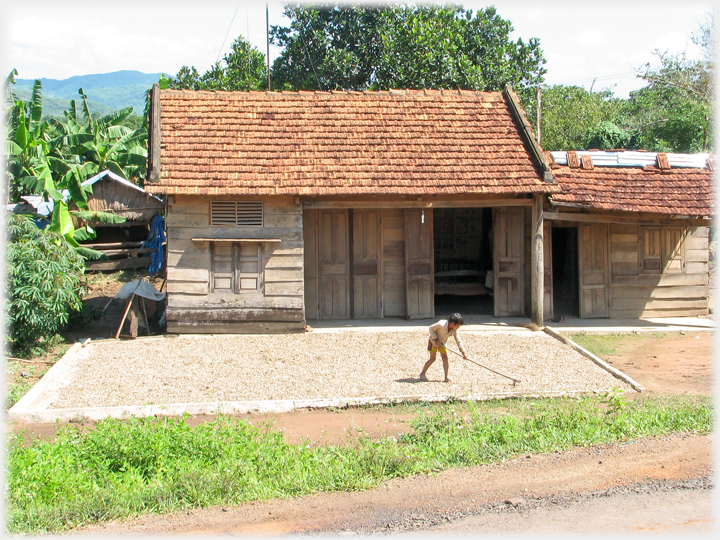 Manioc, a major staple of the diet, being dried on the area in front of the house
Trailers...
Manioc, a major staple of the diet, being dried on the area in front of the house
Trailers...
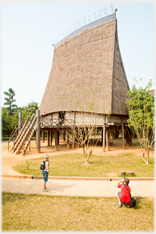 The next page
picks up on the picture from the Ethnology Museum in Hà Nội. Go to a page on that very special museum.
The next page
picks up on the picture from the Ethnology Museum in Hà Nội. Go to a page on that very special museum.
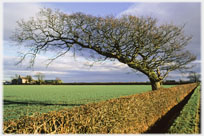 The next page
of the Mosaic Section is headed 'Signposts'.
The next page
of the Mosaic Section is headed 'Signposts'.
Or go to the contents of the Mosaic Section.

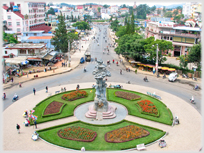 The last page was about the city of Đà Lạt
The last page was about the city of Đà Lạt
 To a village in the Faroes
To a village in the Faroes
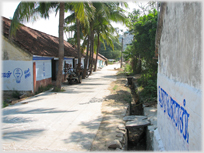 To a village in India
To a village in India
